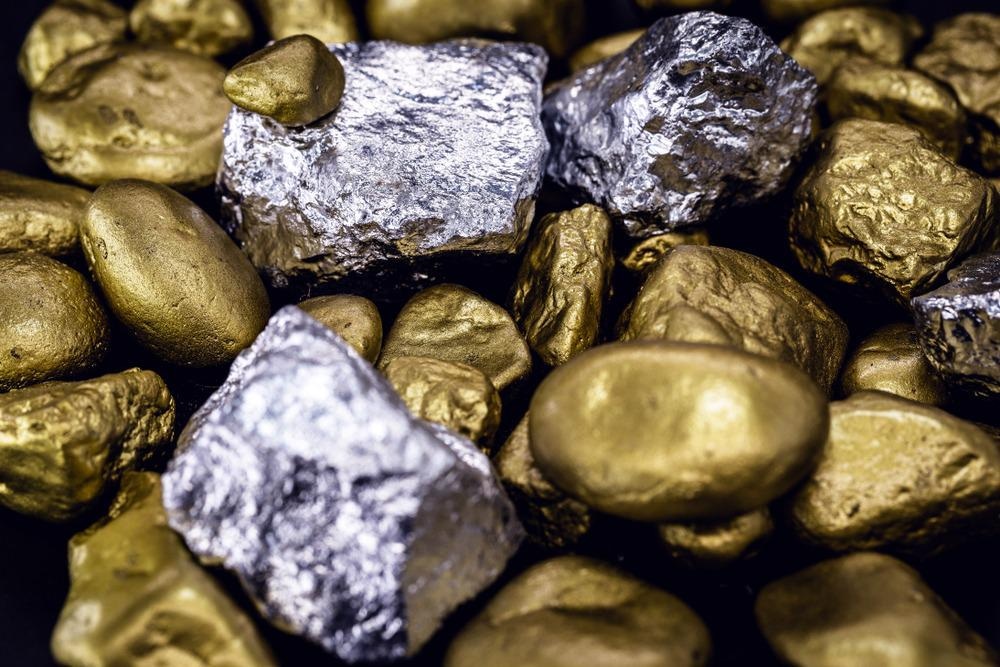Advanced alloys are essential for optical component manufacturing due to their reflective properties. As well as their optical components applications, gold, silver, aluminum and copper alloys have a role to play in a variety of industries. In cutting-edge research, a method for annealing gold with silver drives progress in studying and developing advanced alloys for optical components.

Image Credit: RHJPhtotos/Shutterstock.com
Advanced Alloys for Next-Generation Optical Component Manufacturing
The research was carried out by a team of materials scientists from the Ecole Polytechnique Federale de Lausanne in Switzerland. It presents a new method for manufacturing an advanced gold (Au) and silver (Ag) alloy with low-temperature annealing.
The technique enabled researchers to produce the Au-Ag alloy while maintaining the complex nanostructure of both Au and Ag components.
The method was presented in a paper, “A Low-Temperature Annealing Method for Alloy Nanostructures and Metasurfaces: Unlocking a Novel Degree of Freedom,” published in the journal Advanced Materials in 2022.
A key feature of the advanced alloy is its ability to reflect light in the full spectral range. The study’s authors said that this breakthrough will lead to applications for the low temperature annealed Au-Ag alloy in advanced optical components, including contact lenses and holographic optical elements.
Optical Component Manufacturing with Advanced Alloys
Optical components rely on metals and alloys to reflect light from different parts of the spectrum. For example, Ag reflects blue light while Au reflects red light. As nanotechnology devices, optical components’ functions and performance are determined by the materials used to build them, and so advanced alloys are required for the most advanced nanotechnology applications.
Plasmonics is the field concerned with light’s resonant optical interactions with free electrons in metals and has applications in energy, chemistry, semiconductors, medicine, food, and notably in optical component manufacturing. Progress in the field tends toward coining new metal alloys with high free electron density.
Au is the most widely used metal for plasmonic coinage applications due to its electronic properties, ease to work with, and chemical stability. Aluminum (Al) and Ag can resonate at shorter wavelengths than Au, but they are harder to work in nanotechnology applications such as optical components.
As a result, much recent research has focused on developing advanced alloys that interact with more broad ranges of the light spectrum. Au-Ag alloys demonstrate valuable properties.
As well as optical components applications, these advanced alloys are finding beneficial roles in surface-enhanced Raman spectroscopy, biosensing, therapeutics, photochemistry, and color generation.
This is partly due to their complex nanostructures. At the nanoscale, light interacts with advanced alloys very differently from how it reacts with bulk metals.
Manufacturing Advanced Alloys for Optical Components
Au and Ag alloy have similar lattice constants and a simple binary phase diagram and result in a material that is more chemically stable than pure Ag.
Standard techniques for fabricating Au-Ag alloys include co-deposition, co-reduction of Au-Ag salts, laser ablation, and high-temperature annealing with Au-Ag core-shell nanoparticles (with or without a silicon dioxide, SiO2 coating applied).
However, these provide limited control to optical component manufacturers looking to carefully manage materials’ nanoparticle shape, stoichiometry, and reproducibility. In particular, high-temperature annealing usually used to manufacture Au-Ag alloys alters the materials’ nanostructures at temperature extremes of up to 1000 °C.
To overcome these challenges, Swiss researchers developed a new fabrication method for Au-Ag alloys. The (relatively) low-temperature annealing technique they developed can work with any alloy mixture.
In the new method, one layer of thin-film Au and Ag were stacked on top of another. Both metals were then heated to 300 °C for eight hours, and then the temperature is raised to 450 °C for a final 30 minutes.
These temperatures are not high enough to melt either metal, so the annealing process does not alter their nanostructures.
This enabled the researchers to fabricate a thin film of Au-Ag alloy that retains both metals’ complex nanostructures, therefore reflecting the full spectral range of light.
The researchers said the low-temperature annealed alloy effectively combines the optical properties of Au and Ag used to make it. Adjusting the ratio of metals in the alloy enabled the team to fine-tune the alloy’s optical behavior.
Optical Component Applications for Advanced Alloys
The ability to fabricate advanced alloys that retain the complex nanostructures of their pure metal ingredients has significant implications for optical component manufacturers.
Components for optical computing, electronics, sensing, and microscopy all use metal coatings to reflect and manipulate light. With modern nanotechnology techniques, these coatings can be optimized to manipulate light to convey more information, convey information more quickly, or more securely, or obtain information at ever-higher resolutions.
Advances in metal alloys such as the new low-temperature annealing method that retains metals’ complex nanostructures will lead to advances in new optical component applications.
References and Further Reading
Mining.com (2022) New annealing method maintains the structure of gold, silver in alloys. [Online] Mining.com. Available at: https://www.mining.com/new-annealing-method-maintains-the-structure-of-gold-silver-in-alloys/ (Accessed on 11 May 2022).
Ray, D., et al. (2022) A Low-Temperature Annealing Method for Alloy Nanostructures and Metasurfaces: Unlocking a Novel Degree of Freedom. Advanced Materials. doi.org/10.1002/adma.202108225.
Disclaimer: The views expressed here are those of the author expressed in their private capacity and do not necessarily represent the views of AZoM.com Limited T/A AZoNetwork the owner and operator of this website. This disclaimer forms part of the Terms and conditions of use of this website.